different types of Electric goat fence
Keeping animals contained is a top priority for any homesteader. Their safety is an important part of raising livestock responsibly. This article on the different types of Electric goat fence will give you an overview of our favorite types of fencing options. We’ll go over each and give a list of pros and cons that will help you make the best choice.
There are many goat fence ideas that you can choose from, so be sure to do your research, look for any examples you can check out, and finally, consider your plans for your growing herd and homestead.
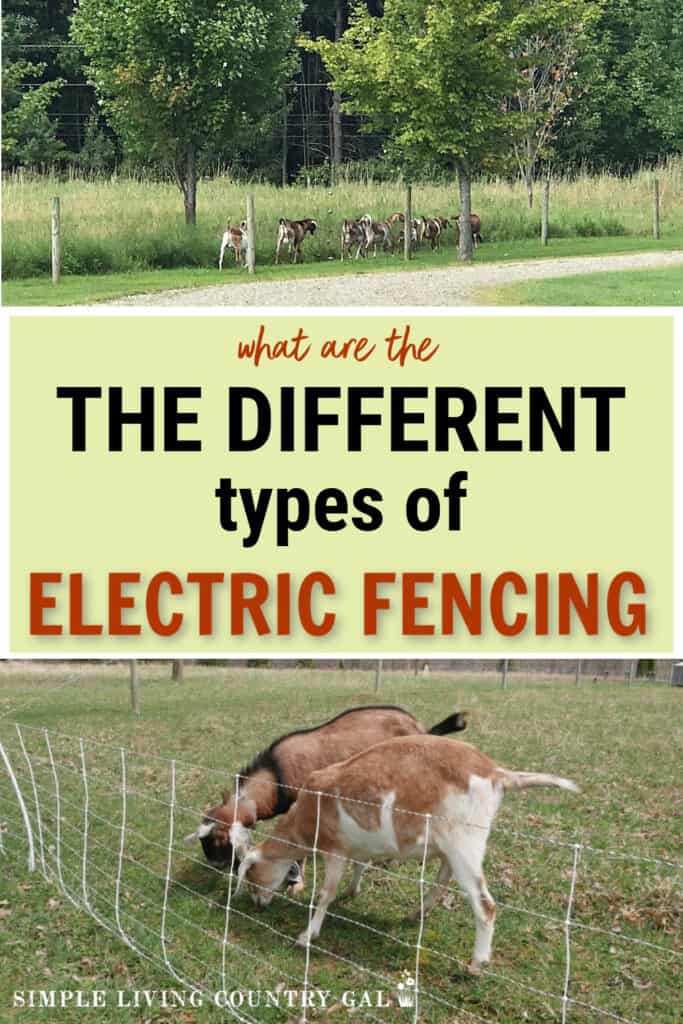
Anyone who owns goats knows how challenging it can be to keep them from escaping and causing mischief. They are curious and agile creatures that can jump, climb, and break through traditional fencing with ease. That’s why electric fencing has become a popular and effective way to contain goats.
Knowing the different types of electric fencing available and how to select the best fence for where you live will help you to prepare a setup that will last years to come.
What is the minimum height for electric fencing?
When setting up a fence for goats, you will want to keep in mind the fact that they can jump. I have found that a good rule of thumb is to have a fence that is at least 4-5 feet tall. If your goats are taught to respect the electric current in the fence, you will have fewer issues with your herd trying to get out.
Training your goats is the key to a fence doing its job, and we will discuss this more in a bit.
READ: What is the Best Goat Fence Height?
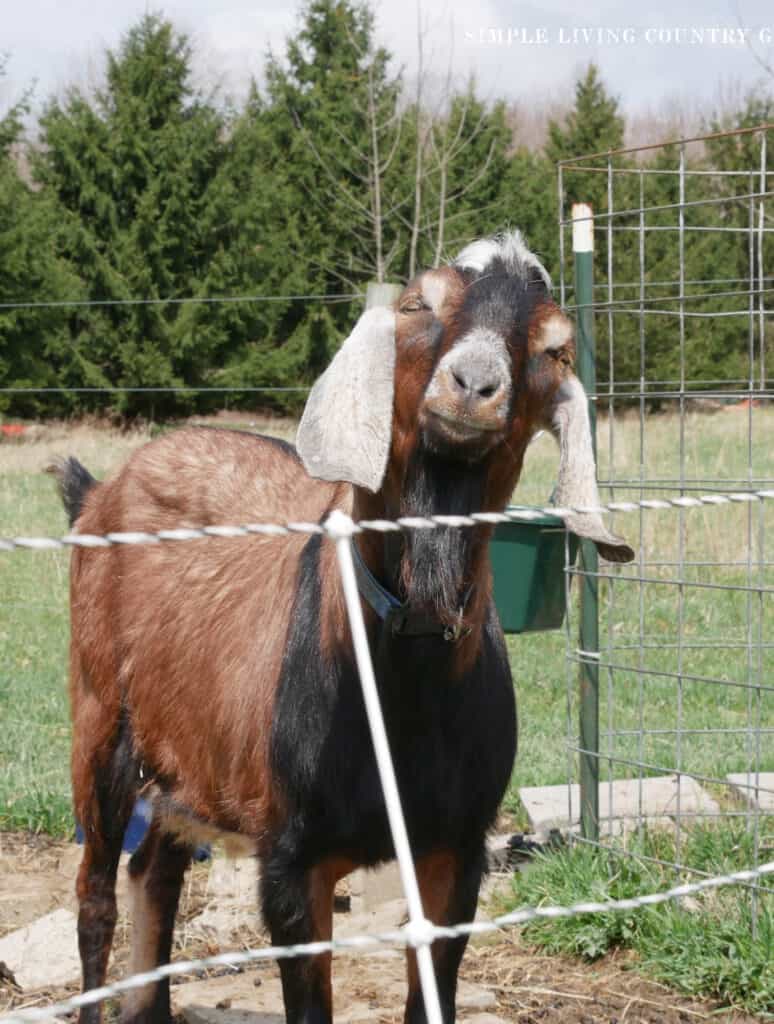
Types of Electric Fencing for Goats
There are three primary types of electric fencing that work well for goats: woven wire or electric netting, poly tape, and high tensile. Let’s go over each one in more detail.
High Tensile
High Tensile fencing is made up of sturdy strands of wire that stretch between large secure poles. This is a permanent fencing option and is used mainly for large pastures. This type of fencing will work well with goats, sheep, cows, horses, and pigs.
Not all strands are electrified, usually just a few key strands. For goats, you will want to ensure the lowest strand has electricity so that even your smallest breeds are not able to go under the fence.
If you have smaller goats, you will also want to ensure the lowest strand is closer to the ground. This will keep your herd safely inside, even the goat kids.
Be aware that having the fence closer to the ground will require you to keep the grass trimmed to ensure the electricity flows without interruptions. This is a pretty time consuming job and one you will want to keep in mind when choosing the best fence option.
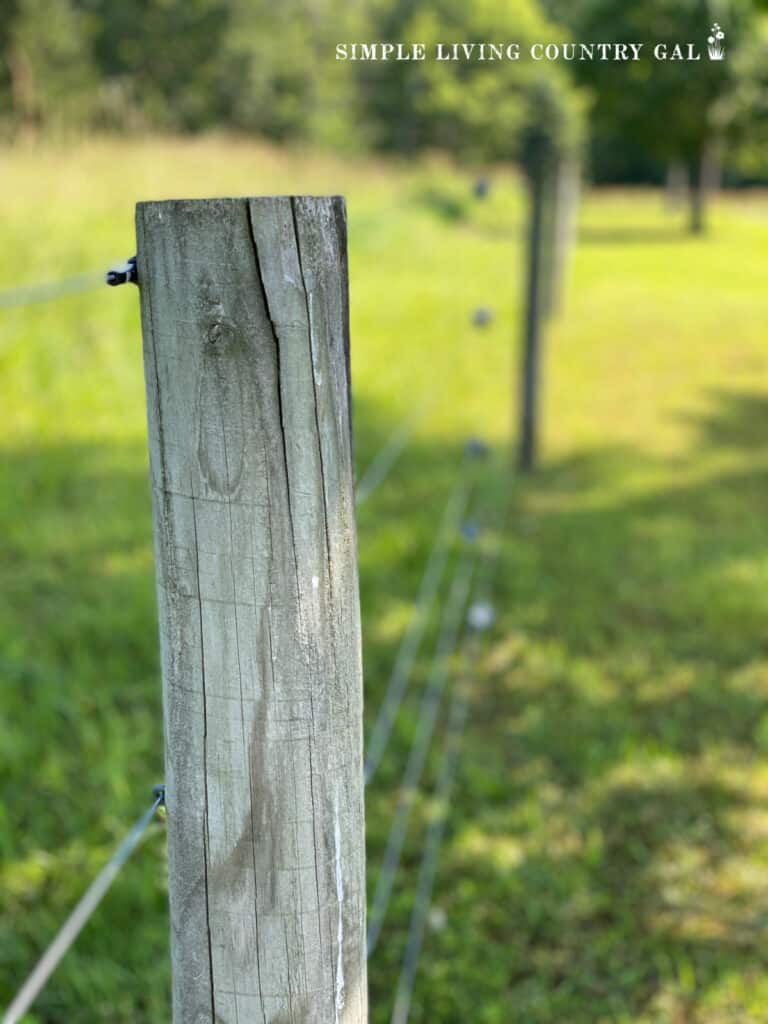
I would recommend you hire out the installation of this type of fencing to someone who is knowledgeable. We hired a local crew to do our fence. Yes, it was an investment for the labor, but 8 years later, that fence is still holding strong without any issues.
Supplies Needed for high tensile fence:
If you want to install the fence yourself, you can read how to do so here. You will also want to be familiar with the tools and supplies needed.
- High Tensile Roll
- Spinning Jenny
- Wire Strainers – connect the wires, keeping them taunt.
- Strainer Handle – helps with wire tension.
- Wire Twisting Tool
- Brace Pins
- Post insulators
- Fence Posts
- Post Hole Digger
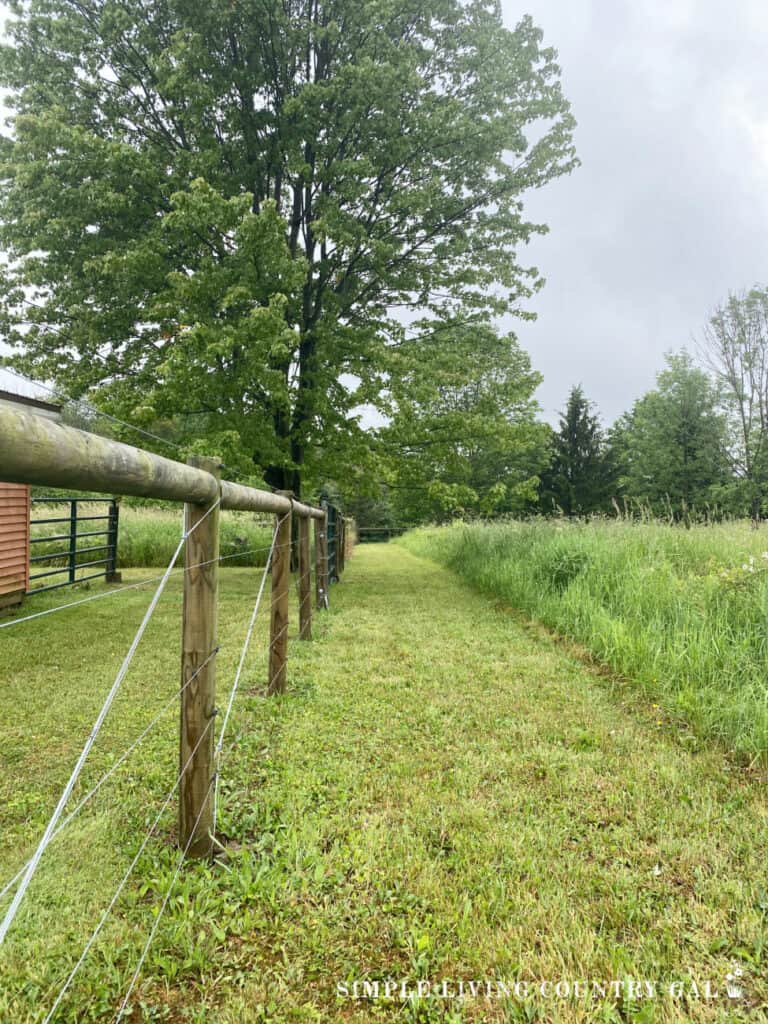
Wire Fence
An electric wire fence is a smaller version of a high tensile fence, making it easier to install without hiring a professional. Another pro of this type of fencing is that you can move it if you need to.
Supplies needed:
- T-posts
- Wire – Galvanized steel or aluminum
- T-post insulators
- Corner post insulators
- Electric source or solar box
- Grounding rod
Installation tips:
T-posts should be placed about 16 inches apart and driven securely into the ground. You’ll want to have all your posts in and set before adding your wire. String your wire on using the insulations to attach to the posts.
Continue adding the wire until the area is completely fenced in, minus the gate. Once finished, attach the power source and make your fence hot.
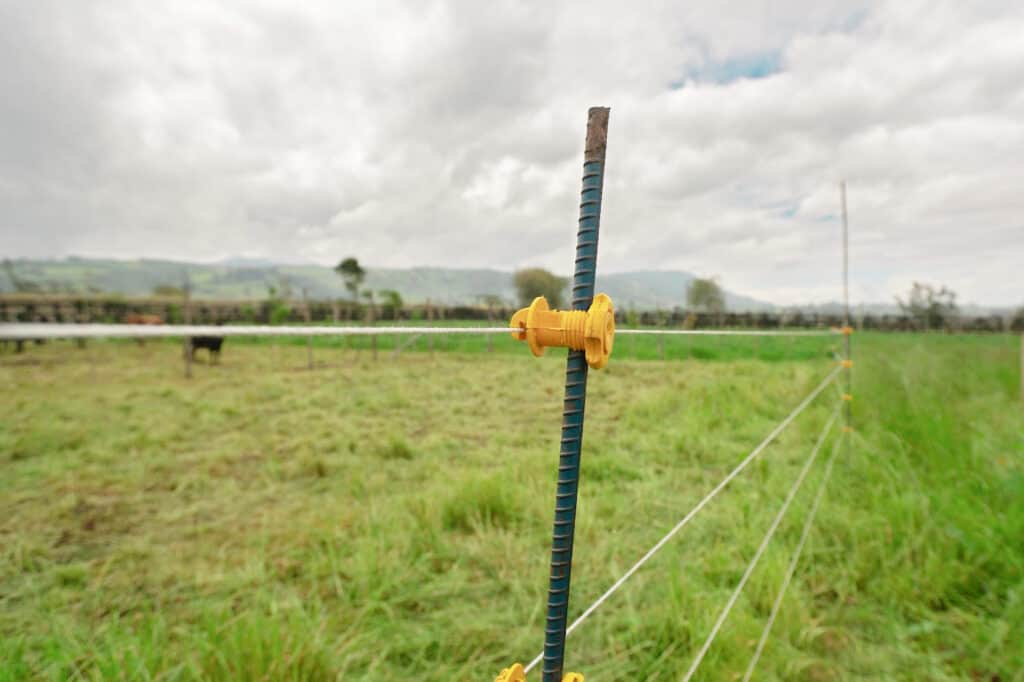
Electric Netting
Electric netting is a flexible, lightweight material that can be moved easily, allowing you to rotate where your herd grazes. It is sold in large rolls that are usually 160 feet or longer and can be easily installed alone. Every strand is electrified, ensuring everyone in your herd is contained safely.
One of the downsides of this type of fencing is that it will not stand up well to snow so it will need to be taken down and stored away each winter.
Supplies needed:
- 1-2 rolls of fence netting
- Power source
- Grounding rod
- You can also purchase a full start-up kit with all the necessary supplies.
Installation tips:
Before setting up the fence, you will need to mow down the line where you want to install it. Once mowed, start at one end of your fence line and push the first stake into the ground. Move down the line, unrolling the netting as you go, and insert the stake as you come to on in the roll. Continue working until the entire roll is installed.
If you are using more than one roll, attach each roll to the other for a solid flow of electricity.
Once finished, attach the power source and make your fence hot.
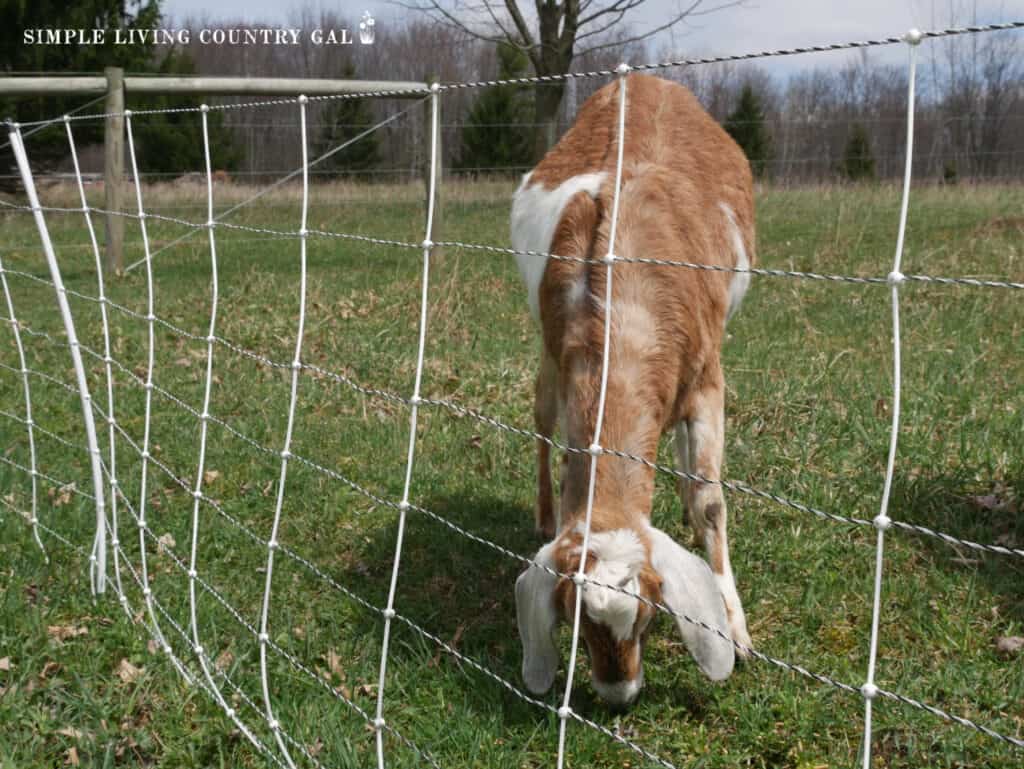
Tips for Selecting the Best Fence
When selecting an electric fence, there are several factors to keep in mind.
- Goat Breed – Consider the size of your goats to help you choose the best fence. Larger goats need a higher fence, whereas smaller breeds will need a fence closer to the ground.
- Temperament – If you have particularly stubborn or adventurous goats, you may need a more robust fence to keep them contained.
- Size – You will also want to consider the size of your property and how much fencing you will need. The bigger the area you plan to fence in, the more cost you will have and the more time you will need to install the fence.
- Power – Will you be using battery or solar power? You can run any fence with solar power, even high tensile. If you have electricity in your barn and plan to connect that barn to the pasture, you may be able to use that as your power source.
- Budget – How much are you able to spend? If your budget is low, you may want to start out with a less expensive option and work your way up from there.
Petween Electric Fence Netting for Sheep, Lambs, Goats, Dogs, 35


Training Goats to Respect Electric Fencing
Electrifying your fence is just the first step in effectively containing your goats. You must also train them to respect the electricity so they won’t try to push through or jump over the fence.
Training Tips for Goats
Training your goats is easy to do and something you will want to have on your project list each spring. Even if your goats are used to electric fencing, I have found that a “refresher course” is a good idea each spring to ensure everyone understands.
Step #1. Let the Herd Out
Allowing your goats out onot the pasture to explore the new areas. Be sure to remain out with your herd to supervise and intervene if necessary.
Step #2. Let the Zap Happen
I know this is hard, but it is an important part of training the entire herd effectively. The electricity will hit the goat’s nose first, which is good. The more sensitive the area, the better the lesson will take.
Step #3. Repeat if Needed
Usually, just one zap is all you need to train most, if not all, of your herd.
Step #4. Supervise
Stay near the power source when training. This way, if there are any issues or a goat gets tangled, you can stop the charge quickly.
Once your goats understand the fence is “hot,” they will be less likely to challenge it.
You can get more step-by-step tips on training your goats on electric fencing here.
The Right Height for Electric Fencing
When it comes to electric fencing, height matters, especially with goats. Goats are skilled climbers and jumpers, so you’ll need to make sure your fence is tall enough to keep them contained. A good rule of thumb is to make sure your fence is at least 4 to 5 feet tall. If you have athletic goats, you may need to add a top rail or increase the height of your fence.
Fence Gate
You will want to have at least one gate to your fenced in area. If your pasture is larger, consider having two access points that are large enough to allow a tractor to fit through. You can make a gate for smaller pastures or purchase a gate for larger setups.
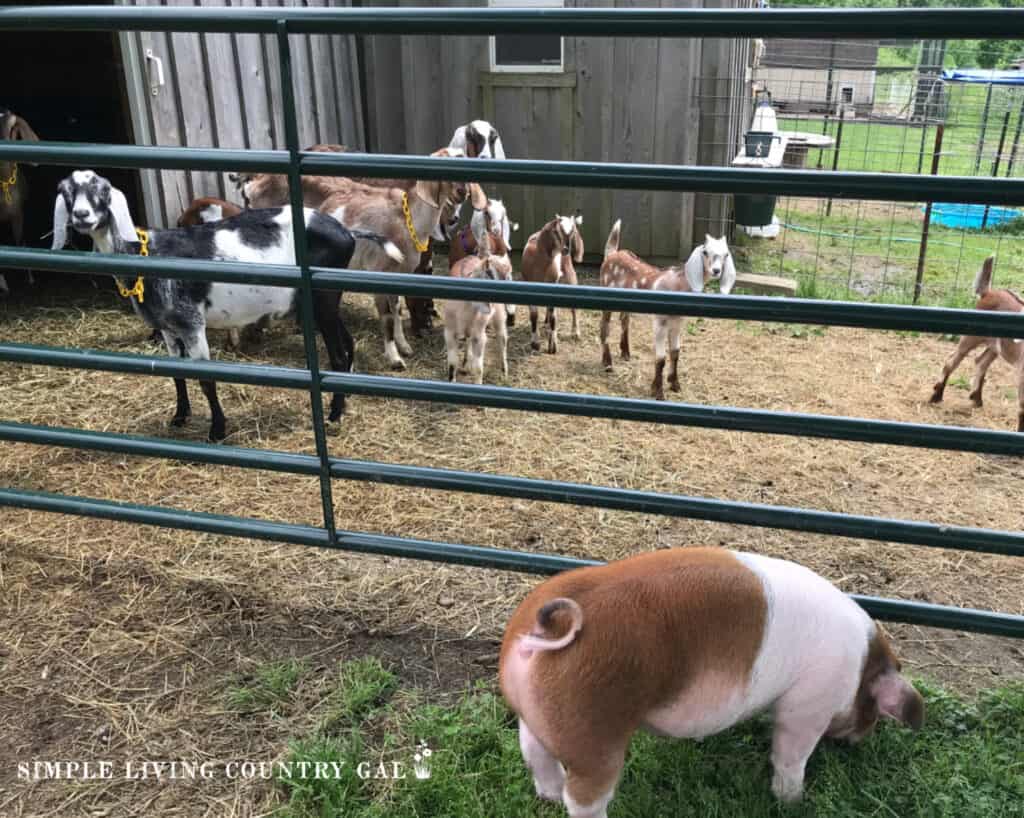
Fence Maintenance
No matter which type of fencing you choose, maintaining the area around the fence is crucial to operating correctly.
Daily – Check the power to ensure it is working properly before letting your herd out to the pasture.
Weekly – Trim the grass at the base of the fence to ensure the current can run without interruption.
Monthly – Walk the fence line and look for any issues that may need to be repaired.
Solar Options
If you’re homesteading off the grid and want to use electric fencing, solar-powered options are available. These fences are easy to install and operate, and they don’t require a power source. Solar electric fencing can be the perfect solution for homesteaders who want to reduce their reliance on traditional power sources.
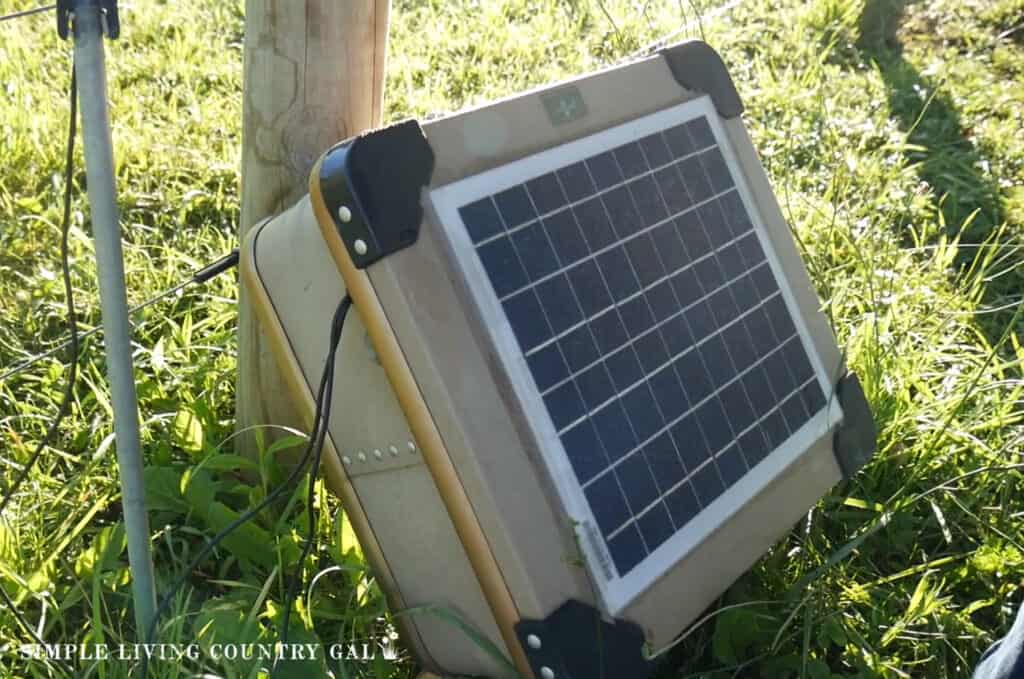
Keeping goats contained can be a challenging task, but with the right electric fencing, it can be done efficiently and safely. Take the time to evaluate your goat’s needs and your property before choosing an electric fence.
Proper installation, correct fence height, and training your goats to respect the fence will ensure a successful containment. If you keep these tips in mind, your goats will be safe and secure within their designated area, and you can enjoy peace of mind.




